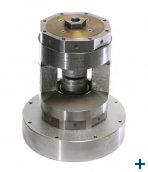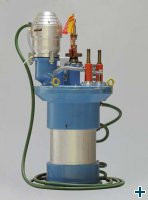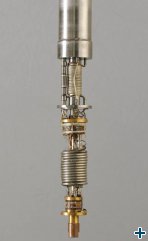Sample Environment
Coordinator: Eddy Lelièvre-Berna (ILL)
Partners: ILL, ESS, STFC, PSI, TUM, CEA, HZB, HZG, CSIC, NPI
Overview
Our aim is to ensure the innovative, successful and cost-efficient use of beam time at existing and future LSF’s through the provision of sample environment beyond the current state-of-the-art. Continuous on-going consultation of different user communities and collaborations with expert laboratories are key in this endeavour. The proposed tasks, established from this consultation, will allow to explore the full potential of the facilities and enable challenging experiments required by the neutron and muon user communities – both from academia and industry. These tasks will also contribute to the development of new industrial suppliers for sample environment equipment.
Tasks and Partners
Task 1. FLOSS software standards for S.E.
Task leader: HZB
A protocol of communication will be defined to promote shared developments and industrial standards. This protocol will allow European facilities to reduce their development costs and share expensive equipment, used at various beamlines. It will also define the communication standard of future equipment supplied by scientific collaborators and industrial partners.
Task 2. Towards efficient sample environment for neutron research
Task leader: ILL
Task 2 aims to offer the most efficient sample environment capabilities to the European suite of instruments. New standards will be commonly developed to increase the signal-to-background ratio by about an order of magnitude, significantly reduce heating cooling rates in furnaces and allow in-situ alignment of crystals in dilution fridges. Companies like A.S. Scientific, which sells the ILL neutron cryostat and furnace worldwide, will directly benefit from this work. All commercial suppliers will be invited to use the findings from this task.

Standard 10 GPa VX-5 Paris-Edinburgh pressure cell used at neutron scattering facilities. © Ecliptique, L. Thion.
Task 3. Next generation pressure cells for neutron and muon research
Task leader: PSI
This task will boost the capabilities of neutron scattering and muon spectroscopy instruments with high-pressure cells built from new materials and designed from novel geometries. World-leading high-pressure experts and companies supplying these new materials will be sought with the aim to deliver new, standard high-pressure equipment to the neutron and muon communities.
Task 4. Complementary in-situ measurements for neutron and muon experiments
Task leader: STFC
Complementary in-situ measuring techniques are often requested to investigate more complex systems and reactions kinetics. This task will allow simultaneous measurements on neutron beam lines of structural information and diffusion coefficients in mesoscopic structures in soft condensed matter. It will also enable probing reorientational dynamics of large molecular systems on muon spectrometers.






